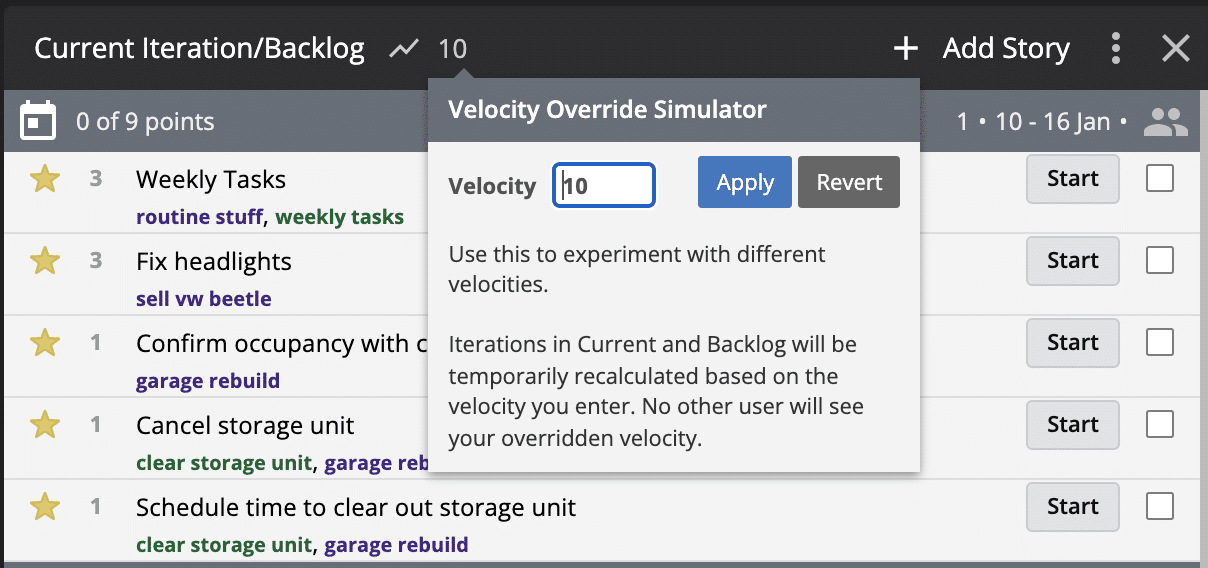Article summary
In today’s installment of Agile Practices for Normal Life, we’re going to plan our first sprint!
If you’re new to the series, you can catch up by reading the following posts before continuing with this one.
- Agile Practices for Normal Life – An Introduction
- Agile Practices for Normal Life – Project Kickoff
- Agile Practices for Normal Life – Building a Backlog
- Agile Practices for Normal Life – Defining & Estimating Stories
A “Typical” First Sprint
Planning the very first sprint of a project can feel a little daunting. Yes, you have your stories queued up in your backlog! You’ve estimated them with story points! But what do those story points mean now?
Unfortunately, those estimates are not going to be super helpful. Since you have not completed a sprint yet, how could you possibly know the number of points you can complete in one sprint? The answer is: you don’t.
For sprint number one, I use my gut to determine what seems like a reasonable amount of work to complete in that timeframe. However, I know it might not be accurate. We might get more done, we might get less done.
On software projects, I communicate this uncertainty with my customer. I also help them understand that soon we will have a better understanding of our velocity, and this will make clearer how many story points we can complete each sprint.
Calculating Velocity
Velocity is a calculation you make at the end of a sprint. This is why, for our first one, we have no idea what our velocity is. Velocity is simply the sum of all story points completed during the sprint. In-progress stories do not count toward velocity.
Example: If I complete two stories in a sprint — one estimated at five points, and one estimated at eight points — then my velocity is 13 points.
I prefer to use an average velocity for planning purposes. This helps level things out, as you may have a sprint here or there that ends with a much higher or lower velocity than “normal” for your project team.
To calculate the average velocity, I used the velocity of the last three sprints.
Example: If my velocity for the last three sprints was 21, 17, and 24, then my average velocity will be 21 (rounded up to the nearest point).
Moving forward, this means I can plan about 21 points worth of work for the sprint and feel relatively confident I can complete the work.
Planning My First Sprint
For my “project,” I opted for one-week sprints instead of the traditional two. For “normal life,” a weekly cadence made more sense to me since there are certain tasks I always do weekly. I have a story that I will duplicate each sprint that contains those items, and then I’ll sprinkle in the other ad hoc tasks as they can fit.
To plan this first sprint, I pulled up what I thought was a reasonable amount of work to complete in one week. That happened to be about 10 points of work.
For the time being, I set my velocity simulator in Pivotal Tracker to 10. Remember, I don’t know my velocity until I complete the sprint. But, this handy feature in Pivotal Tracker allows me to see how different velocity scenarios will play out. For example, what if I could increase my velocity, perhaps by recruiting my partner to help with some of these tasks? When could I complete my backlog of tasks?
Up Next
Next up on Agile Practices for Normal Life, we’ll fast forward a couple of sprints. I’ll discuss how the agile process panned out for my everyday life chores!

